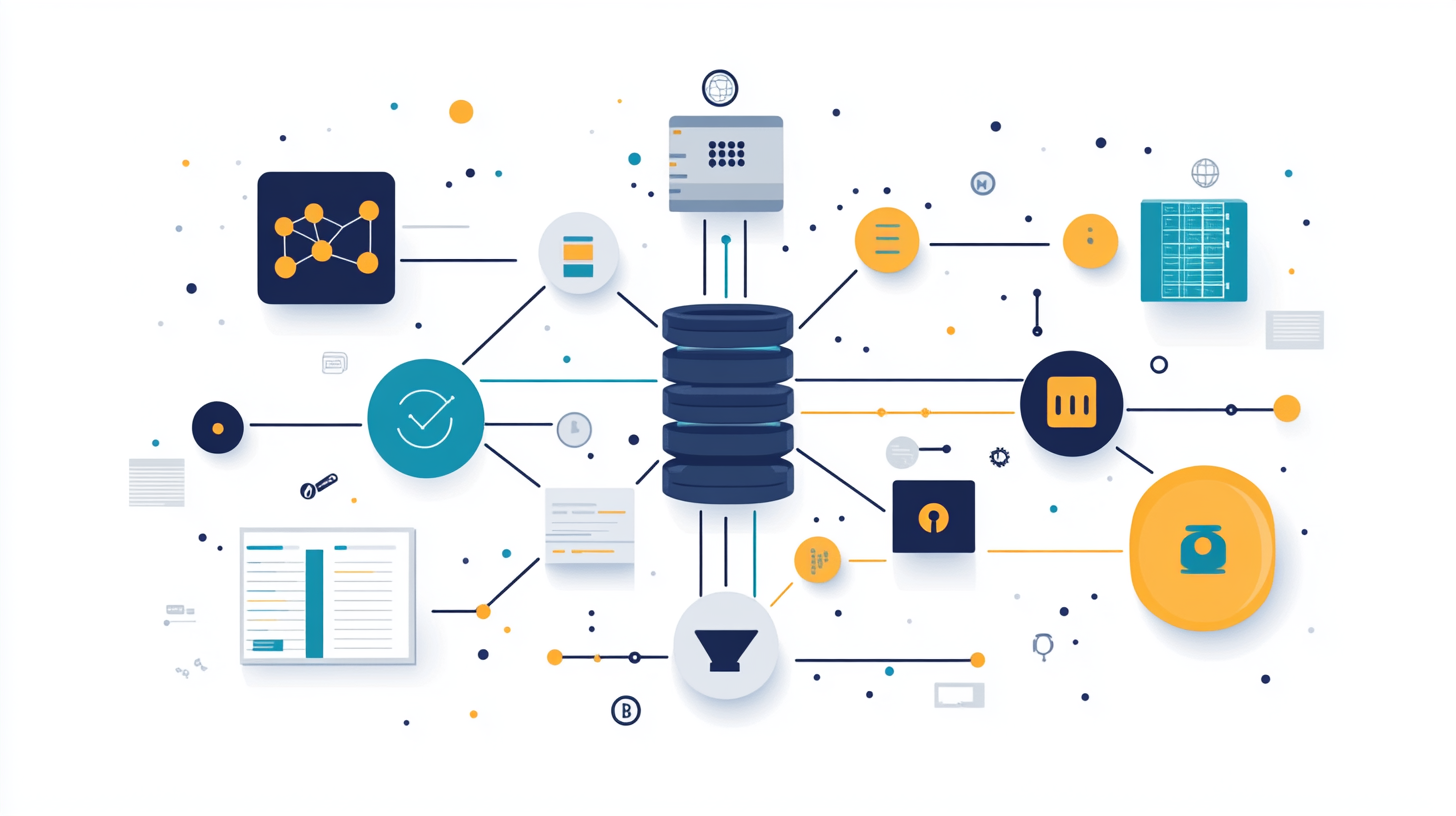Defining ‘Specific’ in Software Engineering: From Vague Visions to Clear Deliverables
Vague goals derail software projects. This article shows how to transform abstract ambitions into specific, testable, and measurable deliverables using frameworks like SMART, INVEST, and Gherkin—bridging vision with execution for predictable success.
Introduction
Every software engineer, product manager, or stakeholder has encountered a project with ambitious yet indistinct goals. Objectives like “improve user experience,” “increase performance,” or “strengthen security” sound visionary but offer little operational guidance. These kinds of vague directives, while often well-intentioned, routinely lead teams down a path of misaligned expectations, delayed delivery, scope creep, and post-release dissatisfaction.
The antidote to such challenges is specificity. In the context of software engineering, being specific means translating general ambitions into detailed, testable, and measurable components that can be implemented and verified. This article explores what it means to be "specific" in software engineering, why it matters, and how teams can consistently turn nebulous goals into actionable tasks that drive successful projects.
We will define the characteristics of specific software goals, contrast them with ambiguous ones, and present frameworks and tools that facilitate clarity. Through real-world examples and practical methods, we aim to bridge the perennial gap between high-level vision and executable software deliverables.
The Nature of Vagueness in Software Goals
Vagueness in software development typically emerges in the early stages of project ideation, where strategic thinking is dominant and tactical planning is still nascent. Consider the following objectives:
- "Improve user experience"
- "Make the app more scalable"
- "Enhance security"
- "Refactor the legacy codebase"
Each of these reflects a valuable aspiration, but none provides engineers with a concrete path forward. Let’s dissect what makes them vague:
- Lack of measurable outcomes: There is no baseline or target.
- Undefined scope: It’s unclear which parts of the system are affected.
- No time frame or dependencies: There's no indication of priority or sequence.
These vague goals often manifest in:
- Planning documents: High-level strategies with little tactical clarity.
- Product backlogs: User stories without acceptance criteria.
- Stakeholder meetings: Aspirations shared verbally but never converted into testable actions.
Vagueness can stall momentum and force teams to rely on assumptions. Engineers must interpret what "improve UX" means, often without user research, performance benchmarks, or design direction. The result? Disparate implementations, duplicated efforts, and product outcomes that miss the mark.
Defining “Specific” in Software Terms
In software engineering, a requirement or goal is specific when it meets the following criteria:
- Clear intention: The purpose of the change is unambiguous.
- Measurable outcome: Success can be quantified or verified.
- Actionable steps: Implementation tasks are identifiable.
- Defined scope: The parts of the system involved are known.
- Bound by constraints: Includes timing, dependencies, or technical limits.
Several established frameworks help teams shape specific requirements:
SMART Goals
SMART is a widely-used framework for setting objectives, ensuring they are:
- Specific: Clear and unambiguous
- Measurable: Quantifiable with defined criteria
- Achievable: Realistic given resources and constraints
- Relevant: Aligned with broader objectives
- Time-bound: Has a defined timeline or deadline
Example:
Vague: "Improve page load speed."
SMART: "Reduce average page load time for the product catalog from 5s to under 2s by end of Q2."
INVEST for User Stories
INVEST helps product teams write better user stories:
- Independent
- Negotiable
- Valuable
- Estimable
- Small
- Testable
This ensures stories are not just manageable but also testable and valuable.
Example:
User story: "As a shopper, I want to view product reviews so that I can make informed decisions."
Acceptance criteria:Reviews must be fetched asynchronously via the Reviews API.Display the average rating prominently.Users can sort reviews by date or rating.
Each element contributes to specificity by narrowing what counts as "done."
Translating Vision into Deliverables
Specificity doesn't arise spontaneously. It requires deliberate translation of strategic goals into executable actions. The following structured approach helps teams bridge the gap:
Step 1: Understand Stakeholder Intent
Start by engaging with stakeholders to unpack the motivations and desired outcomes behind high-level objectives. Use open-ended questioning, collaborative workshops, and feedback sessions to go beyond surface-level statements.
Example:
Goal: "Improve security"
Clarifying questions:What threats or vulnerabilities are we addressing?Are there specific compliance standards or regulations to meet?Which parts of the system are most at risk?
Step 2: Contextualize Within System Constraints
Next, analyze technical feasibility, existing infrastructure, architectural boundaries, and resource availability. Map abstract goals to actual subsystems and workflows.
Example:
From the stakeholder goal "Make the app more scalable," determine:What usage patterns have challenged the current system?Which services or endpoints are showing performance bottlenecks?Are there scaling limitations in the database, caching layer, or network?
Step 3: Quantify Success Metrics
Wherever possible, convert broad aspirations into measurable KPIs or performance indicators. This enables teams to align on what success looks like.
Example Transformation:
Vague: "Improve user engagement."
Specific: "Increase daily active users (DAU) by 20% over the next quarter through onboarding improvements."
Step 4: Break Down into Testable Deliverables
Translate refined objectives into backlog items with clear acceptance criteria, mockups, or test cases. Prioritize these deliverables based on business value, risk, and effort.
Case Study: Security Enhancement
- Vision: "Enhance platform security."
- Specific Objective: "Achieve compliance with OWASP Top 10 by Q3."
- Deliverables:
- Conduct security audit using ZAP scanner.
- Patch XSS vulnerabilities in the authentication module.
- Enforce HTTPS across all environments.
- Implement 2FA for admin users.
This layered process ensures the transformation from vision to delivery is deliberate, traceable, and effective.
Tools and Practices to Support Specificity
Turning goals into deliverables requires not only good intent but reliable tooling and practices that systematize specificity across the software development lifecycle.
Requirement Engineering Techniques
- Use Cases: Define interactions between actors and systems, useful for uncovering edge conditions and exception flows.
- User Stories: Simple narratives that capture user needs and outcomes, especially when enriched with acceptance criteria.
- Job Stories: Focus more on context and motivation than personas: "When [situation], I want to [motivation] so I can [outcome]."
Behavioral Specification with Gherkin
Gherkin syntax, used in tools like Cucumber, enables writing testable, business-readable acceptance criteria:
Feature: Password strength enforcement
Scenario: Weak password rejection
Given I am on the registration page
When I enter a password "1234"
Then I should see an error "Password too weak"Gherkin aligns stakeholders, QA, and developers around a shared understanding of success criteria.
Validation Techniques
- Unit Tests: Verify that small, isolated pieces of functionality behave as expected.
- Integration Tests: Confirm that components interact correctly across boundaries.
- Acceptance Tests: Validate that the system meets specified requirements from a business or user perspective.
- Benchmarks: Quantify performance metrics like latency, memory consumption, or throughput.
By embedding specificity into tests and specification artifacts, teams build systems that are easier to reason about, verify, and evolve.
Consequences of Nonspecific Requirements
Failing to define specific goals doesn’t just reduce efficiency—it actively introduces risk and instability throughout the software development process.
Project Risk and Misalignment
When requirements are vague, interpretation varies by role:
- Product managers may envision a new UI flow.
- Developers may assume backend logic changes.
- Testers may not know what success looks like.
The result is a fragmented delivery with inconsistencies that surface too late in the cycle.
Scope Creep and Planning Instability
Ambiguity invites uncontrolled expansion:
- "Improve performance" evolves into rewriting the whole service.
- "Make UX better" spawns endless design tweaks.
Without clear boundaries, priorities shift mid-sprint, deadlines extend, and resource estimates become irrelevant.
Quality Assurance Failure
If testers don’t have testable criteria, they can’t verify functionality:
- Bug reports become subjective.
- Regression risk increases.
- QA sign-off is reduced to opinion, not evidence.
Simulation: Fintech Application Upgrade
A fintech startup set out with the goal to "enhance platform performance" ahead of launching a new feature set. The generality of the goal led to differing interpretations:
- Engineers focused on refactoring backend services.
- Product managers assumed improvements to the client-side dashboard.
- Ops teams interpreted it as infrastructure scaling.
Consequences:
- Teams pursued parallel work that did not align.
- Critical bottlenecks in payment processing latency were missed until late testing.
- Launch was delayed by six weeks due to incomplete performance validation.
Had the goal been defined as: "Reduce median payment processing time from 1.5s to under 500ms for 95% of transactions before public beta," the team would have targeted the critical performance path with a clear, measurable objective and coordinated effort.
Conclusion
Specificity is not a luxury in software engineering—it is a necessity. Teams that invest the time and effort to turn ambiguous aspirations into precise, measurable deliverables are rewarded with alignment, efficiency, and confidence in execution. Conversely, those who operate under vague mandates face avoidable risks: miscommunication, scope drift, QA failure, and costly rework.
To operationalize specificity:
- Start with why: Understand stakeholder motivations before defining technical goals.
- Use structured frameworks: Apply SMART, INVEST, and Gherkin to formalize intent.
- Quantify outcomes: Define KPIs and testable metrics for each objective.
- Validate continuously: Embed tests and benchmarks at every level of delivery.
- Bridge vision and tasks: Translate high-level goals into implementable user stories and backlog items.
Final Recommendations
- Product Managers: Ensure backlog items have acceptance criteria grounded in business value and technical feasibility.
- Engineers: Seek clarity through questions and offer measurable implementation options.
- QA Teams: Align testing strategies to agreed-upon success criteria early in the process.
- Executives & Stakeholders: Distinguish vision from instruction and support teams in transforming strategy into actionable, trackable work.
By institutionalizing specificity, software teams not only deliver better outcomes—they create a culture of shared understanding, predictable results, and continuous improvement.














Discussion